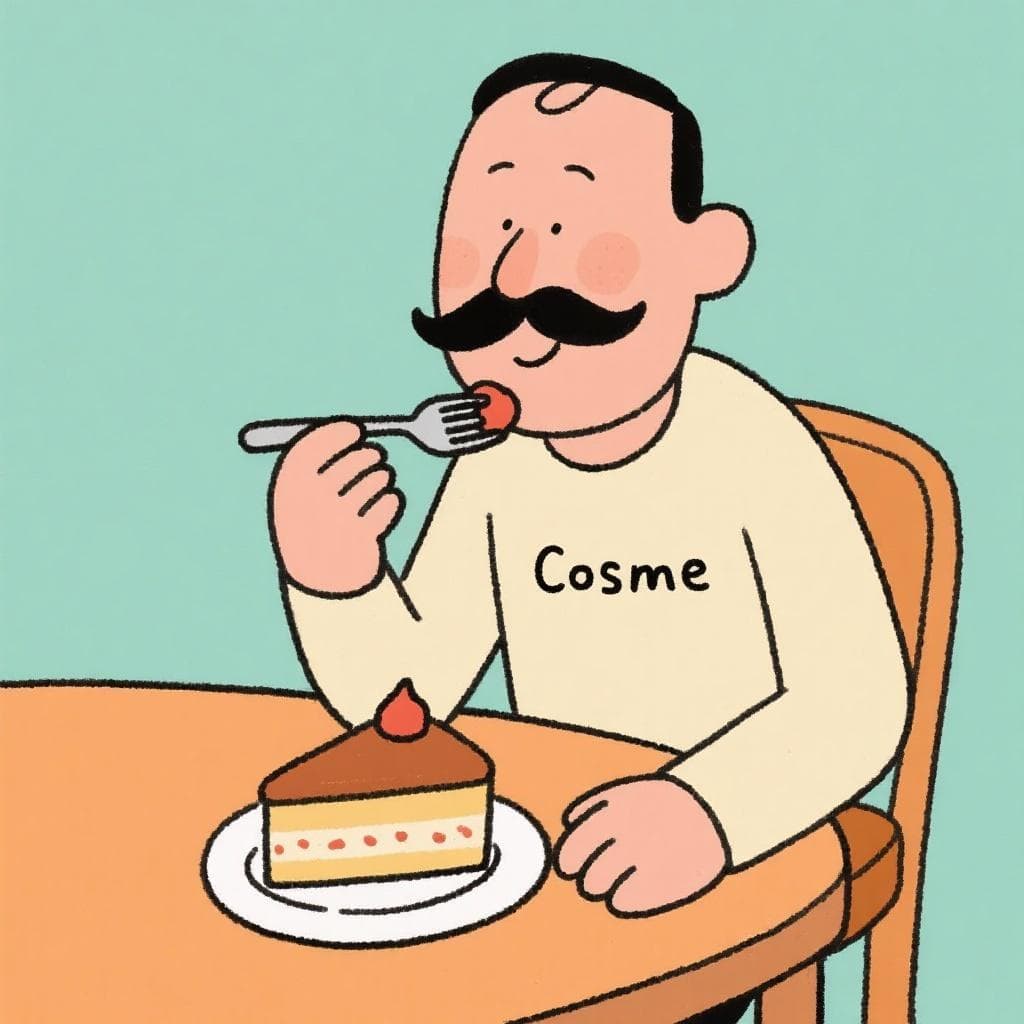Cómelo, Cosme, con calma.
CÓ-me-lo, COS-me, con CAL-ma
Eat it, Cosme, calmly.
🔊 Listen & Practice
Start with slow speed to master pronunciation, then gradually increase to challenge yourself.
🎨 Visualization

Cómelo, Cosme, con calma. A simple phrase to practice your calm, clear pronunciation!
🎯 Pronunciation Focus
The Hard 'C' Sound (like 'k')
/k/Focus on the crisp 'k' sound in 'Cómelo', 'Cosme', and 'calma'. In Spanish, 'c' before 'a', 'o', or 'u' is always a hard 'k' sound, never a soft 's' sound like in English 'cease'.
Pure Vowel Sounds: 'o' and 'a'
/o/, /a/Practice making the pure Spanish 'o' (like in 'go') and 'a' (like in 'father'). Unlike in English, they don't glide into other sounds. Keep them short and crisp.
The Spanish 'L' Sound
/l/Notice the 'l' in 'Cómelo' and 'calma'. The Spanish 'l' is 'lighter' than in English. Touch the tip of your tongue just behind your top front teeth, not further back on the roof of your mouth.
📝 Practice Breakdown
Start here. Focus on making the 'o' sound in both words identical. Keep the 'C' sound crisp like a 'k'.
Now for the second half. Feel the quick switch from the 'o' vowel in 'con' to the 'a' vowel in 'calma'. Keep the 'l' sound light.
Put it all together. The goal is a smooth, even rhythm. The tongue twister itself is telling you how to say it: calmly!
Key Words in This Tongue Twister:
📚 Background
This is a fantastic first 'trabalenguas' for beginners. It's less about speed and more about mastering the clear, crisp sounds of Spanish vowels and the hard 'c'. It's a short, simple, and memorable way to build a strong pronunciation foundation.
❌ Common Pitfalls
Using a Soft 'S' for the 'C'
Mistake: "Pronouncing 'Cosme' as 'Sos-may', similar to how 'c' can sound in English words like 'city'."
Correction: Remember this simple rule: in Spanish, 'c' before 'a', 'o', or 'u' is ALWAYS a hard 'k' sound. Think 'car', 'cold', 'cut'. Make it a crisp, clear 'k' every time.
Using 'Lazy' English Vowels
Mistake: "Letting the 'o' in 'Cómelo' sound like the English 'o' in 'go', which glides into a 'w' sound at the end (goh-w)."
Correction: Spanish vowels are pure and short. Make the 'o' sound and hold it without changing your mouth shape. It's one clean sound. The same goes for the 'a' in 'calma' – it's a pure 'ah' sound, like a doctor asks you to make.
🌎 Where It's Used
General Spanish
This is a universally known tongue twister, perfect for learners anywhere as it focuses on core sounds common to all Spanish dialects.
🔗 Related Tongue Twisters
The Calm Cosme Challenge
The goal isn't speed, it's clarity. Can you say it three times in a row, maintaining a perfectly calm and even rhythm, without any 'English-sounding' vowels? Record yourself and listen for the pure sounds.
🏷️ Tags
Frequently Asked Questions
Why is this considered a tongue twister? It seems so simple.
Great question! For beginners, the 'twist' is in the rapid repetition of similar sounds ('Co-', 'Co-', 'con ca-') and maintaining the pure Spanish vowels without slipping into English habits. It trains your mouth for consistency, which is a key skill.
What does 'Cómelo' mean? Why does it have 'lo' at the end?
'Cómelo' is a command form of the verb 'comer' (to eat) with the pronoun 'lo' (it) attached directly to the end. This is very common in Spanish commands. So, it literally means 'Eat it!'

